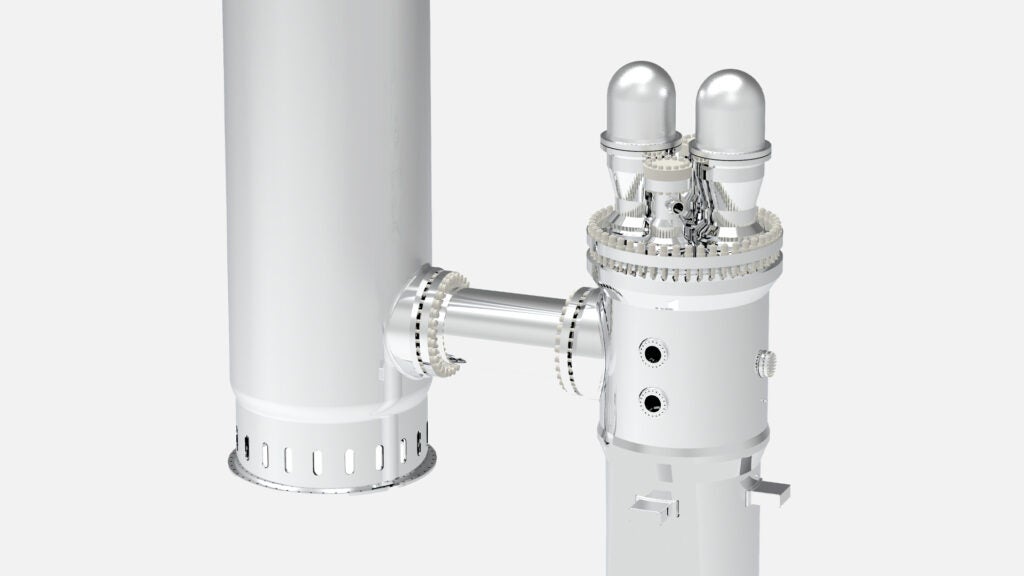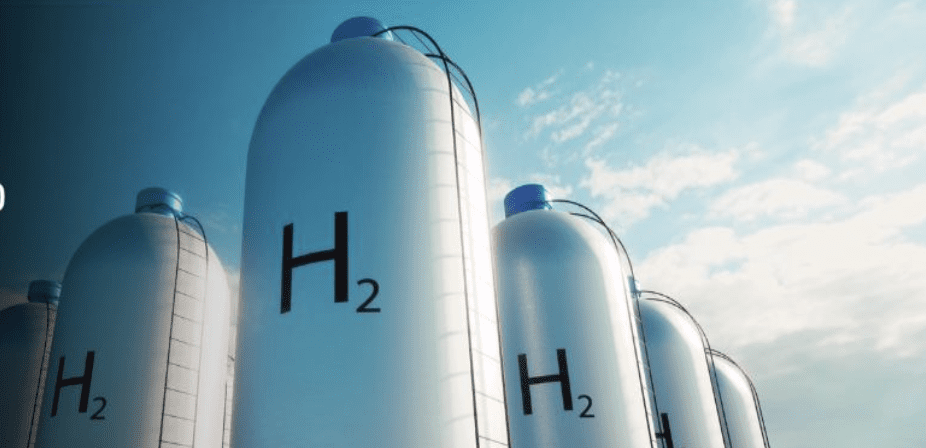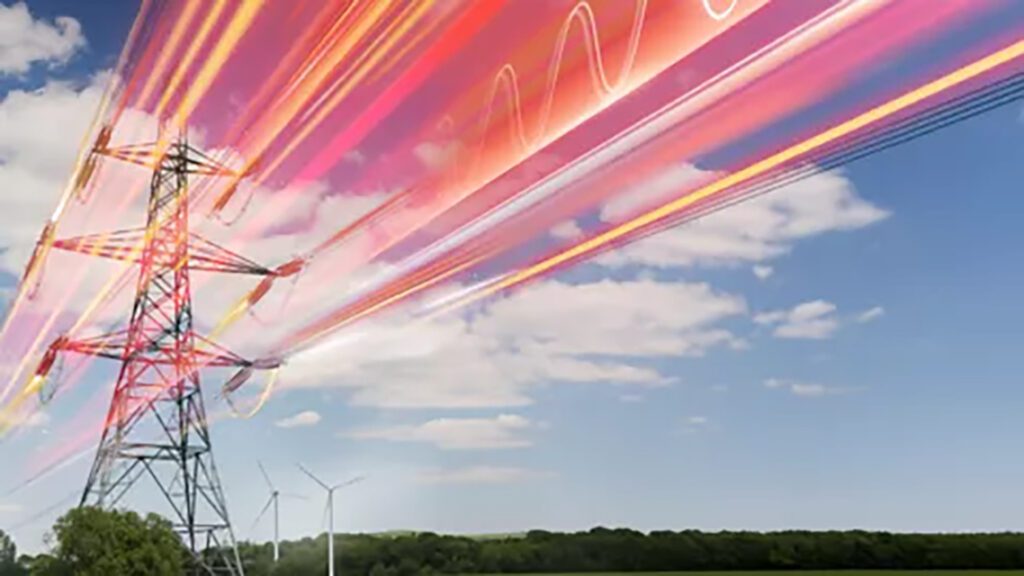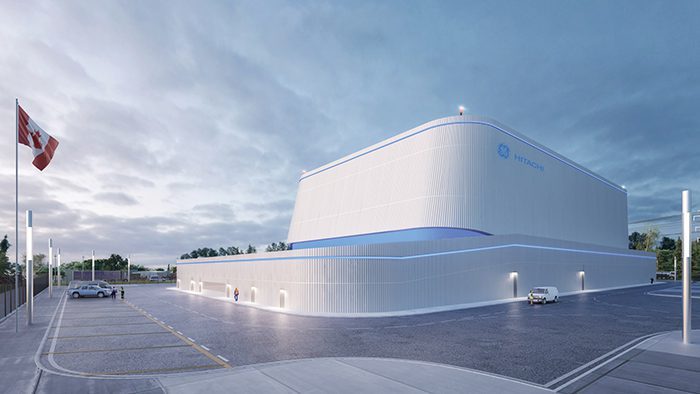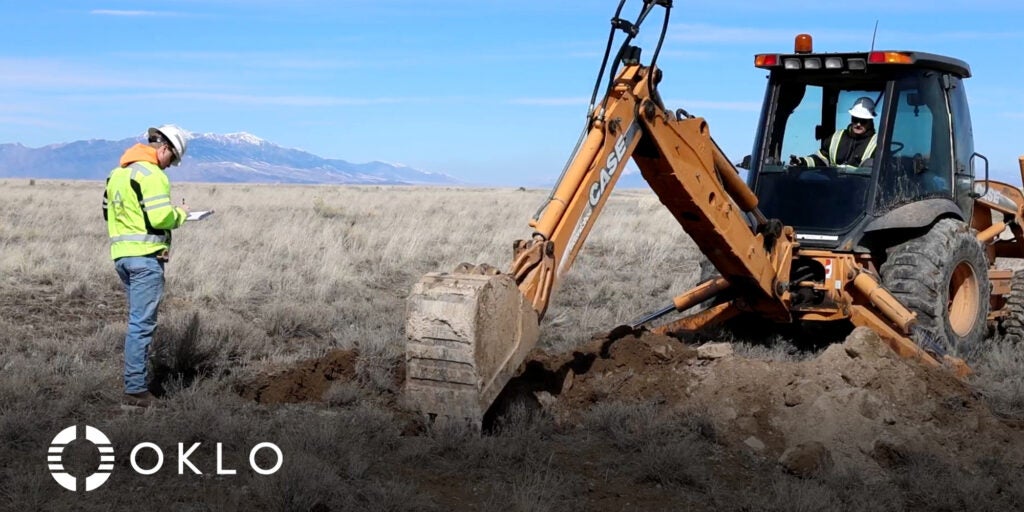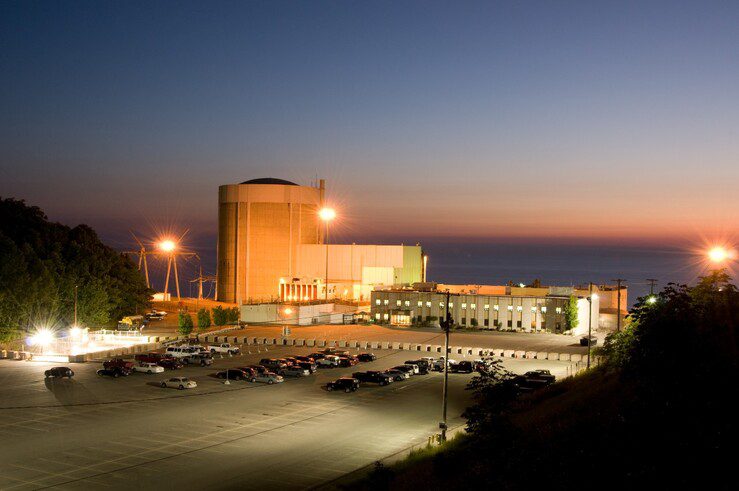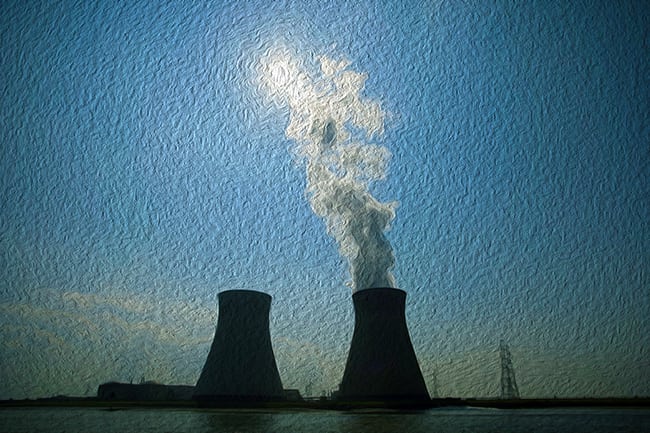The U.S. Department of Energy (DOE) has reissued a $900 million funding opportunity to accelerate deployment of Generation III+ small modular reactors (SMRs), removing community benefit requirements and shifting the focus solely to technical merit—a move that reflects the Trump administration’s revised energy and industrial priorities.
The funding opportunity announcement (FOA)—officially designated DE-FOA-0003485—was first issued in October 2024, backed by funds appropriated through the 2021 Infrastructure Investment and Jobs Act (IIJA) and authorized under the Consolidated Appropriations Act of 2024. The effort remains jointly administered by the Office of Nuclear Energy and the Office of Clean Energy Demonstrations (OCED), with technical support from the National Nuclear Security Administration (NNSA).
As POWER reported in detail in October, the Biden-era solicitation outlined a two-tier funding structure. Tier 1 will provide up to $800 million to one or two “first mover” teams composed of a U.S. utility, a reactor vendor, an engineering procurement construction (EPC) partner, and committed off-takers or end-users. Projects are expected to lead to the commercial deployment of an initial SMR plant “while facilitating a multireactor, Gen III+ SMR orderbook.” Tier 2 will provide up to $100 million “to spur additional Gen III+ SMR deployments” by addressing key gaps that have hindered the domestic nuclear industry in areas such as design, licensing, supplier development, and site preparation.
The March 24–issued revised solicitation maintains the two-tier funding structure. However, it includes specific notable revisions. Each of the four technical review criteria—Project Relevance and Impact, Technical Merit, Project Team and Resources, and Work Plan and Management—will now carry equal weight of 25%, marking a departure from the original FOA, which included community benefits as a scored category.
“The Trump administration has modified the solicitation process to ensure potential SMR first-movers are judged solely based on technical merit,” DOE Press Secretary Ben Dietderich told POWER on Tuesday. “As part of the modification process, a 20% weighting for [Diversity, Equity, and Inclusion (DEI)] imposed by the previous administration has been removed.
He added: “With President Trump’s leadership, the Department of Energy is accelerating the development of American nuclear technology and ensuring the American people’s access to reliable, abundant, and affordable energy is the number one priority of all Energy Department projects.”
Community Requirements Dropped
According to the FOA, eligible Tier 1 projects must feature Generation III+ light-water reactor (LWR) designs ranging between 50 MWe and 350 MWe per unit. (To be considered, total plant output, including process heat loads, must be below 350 MWe.) Projects may involve single-unit or multi-unit configurations with no cap on total site output. Designs must meet a minimum Technology Readiness Level (TRL) of 6, signaling sufficient maturity for system-level validation and procurement.
The FOA also stresses that cost-sharing is a core requirement. “DOE cannot contribute more than 50% of the overall project cost; therefore, the total award value will be no less than $1.6 billion, if the full government share is awarded.” It adds that “DOE will pay out based on previously agreed milestone amounts upon their completion,” and that “the agreed upon milestone payment from DOE cannot account for more than 50% of the project costs incurred in completing the milestone.”
Successful proposals must also demonstrate substantial pre-application engagement with the Nuclear Regulatory Commission (NRC), a pathway to final design and licensing by the early 2030s, a clear project spend plan with a milestone-based cost structure, and a viable project financing strategy. Awardees under Tier 1 will also have the opportunity to collaborate with the NNSA to integrate security and safeguards into plant design.
The FOA also emphasizes the importance of evidence of regulatory progress and local engagement, though these are no longer scored requirements. In addition, the DOE clarified that federally funded pre-site development activities—such as planning, design, and paper studies—may be categorically excluded from detailed NEPA review, though coordination with NRC is ongoing to prevent duplication.
The most prominent change— as highlighted above—is that the March 24 submission formally eliminates all community benefit obligations that were central to the October 2024 solicitation. That includes the removal of the Community Benefits Plan, which had been a required five-page submission outlining how projects would support community and labor engagement, workforce investment, and equity objectives. It also eliminates the “Program Policy Factors” section, which the DOE previously used after technical review to prioritize projects based on geographic diversity, local job creation, engagement with disadvantaged communities, and alignment with broader social goals such as the Justice40 Initiative. The reissued FOA now states that “applications will be evaluated solely on technical merit.”
Tier 2 applicants can include developers, utilities, or suppliers who must address one or more of three focus areas: site preparation and permitting, supply chain expansion, and cost improvement and schedule estimation for SMR projects. The DOE underscored that its funding “will never exceed 50% of the total project cost.” Applicants must match funding at every stage, and payments will be made based on milestone completion and verified cost outlays, it said.
Under the new FOA, notably, applicants can also submit proposals under both Tier 1 and Tier 2, provided the scopes are distinct and independently eligible for selection.
All Applicants Must Resubmit
The revised solicitation also explicitly states that “applications previously submitted to OCED eXCHANGE under the original FOA will not be considered,”—which means that all applicants so far, new and returning, must submit their proposals in full through FedConnect, a government procurement portal. The new application deadline is now April 23, 2025, 5:00 p.m. ET.
Dietderich confirmed the change. “Previous applicants have been informed they will need to revise and resubmit their applications in their entirety through FedConnect as all applicants will now be judged solely on technical merit,” he noted. He added that new applicants who did not previously submit a proposal under the 2024 solicitation are also eligible to apply.
On Tuesday, the DOE also mentioned that it has no plans to issue a second round for the Gen III+ opportunity. “However, if none of the projects submitted are selected, or if additional funds are made available, DOE may consider a second round or a new solicitation in 2025 or later.”
So far, only one team has publicly acknowledged it was pursuing the DOE’s Gen III+ SMR funding opportunity. On Jan. 17, the Tennessee Valley Authority (TVA) confirmed it would lead an application for $800 million from the program backed by a broad coalition that includes Bechtel, Sargent & Lundy, GE Hitachi Nuclear Energy, BWX Technologies, Duke Energy, EPRI, Indiana Michigan Power, Oak Ridge Associated Universities, and major industrial firms such as Scot Forge and North American Forgemasters, along with the state of Tennessee.
The team has been working to advance a 300-MW deployment of GE Hitachi’s BWRX-300 SMR at TVA’s Clinch River Nuclear Site in Oak Ridge, a brownfield site with the only NRC-issued early site permit for SMR deployment. TVA suggested that federal funding could accelerate the project’s construction by two years, targeting commercial operation by 2033. While TVA’s board has not yet formally approved the Clinch River SMR, the coalition has already adopted an integrated project delivery (IPD) model that could see all partners collaborating on cost estimates and schedules to mitigate risks.
Asked how the realignment might affect the pool of potential applicants, Dietderich said DOE could not comment on specific submissions. “While applicants may self-disclose that they are applying to this solicitation, that is considered procurement-sensitive information, which the Department of Energy cannot share,” he said.
Part of a Broader Push for Energy Security
On Tuesday, the DOE framed the reissued solicitation as part of a broader push to meet rapidly growing U.S. electricity demand, which it said is “forecast to soar in the coming years driven by consumer needs, data center growth, increased AI use, and the industrial sector’s need for constant power.” Secretary of Energy Chris Wright added, “Abundant and affordable energy is key to our nation’s economic prosperity and security. This solicitation is a call to action for early movers seeking to put more energy on the grid through the deployment of advanced light-water small modular reactors.”
Echoing the Biden administration, the Trump administration noted that SMRs offer flexible deployment due to their compact, modular design, and could help accelerate deployment timelines by leveraging the existing service and supply chain supporting the country’s current fleet of LWRs.
The Gen III+ SMR solicitation follows DOE’s 2020-launched Advanced Reactor Demonstration Program (ARDP)—unveiled by the first Trump administration—which targets non-light-water Gen IV technologies. Two much-watched demonstrations, TerraPower’s Natrium project in Wyoming, a sodium-cooled fast reactor project, and X-energy’s Xe-100 in Texas, a high-temperature gas-cooled reactor project, remain underway. While the ARDP supports high-risk, next-generation systems, the Gen III+ solicitation is targeting near-term deployment using familiar LWR platforms and leveraging the existing workforce and supply chain.
The DOE suggests that, unlike ARDP, which has encountered delays and escalating costs, the Gen III+ program is positioned as a lower-risk complement—particularly attractive to utilities, industrial users, and data center operators seeking clean, firm capacity within the next decade. According to the reissued FOA, the program seeks to “spur the deployment of Gen III+ light-water small modular reactors” by supporting “a competitive and predictable pathway to commercial deployment,” while prioritizing “technical readiness, potential for a multi-reactor orderbook, and impact on the domestic nuclear industrial base.”
—Sonal Patel is a POWER senior editor (@sonalcpatel, @POWERmagazine).
Editor’s Note: This story is currently evolving and subject to change. We encourage you to revisit this article or check our website for the latest updates.



